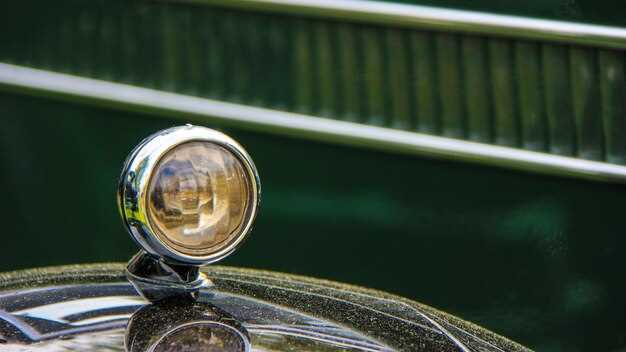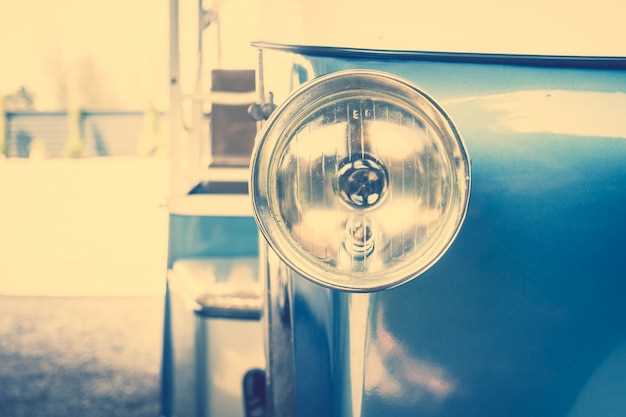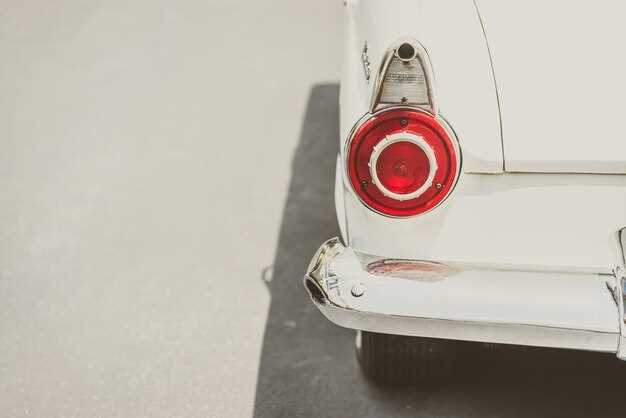Impact of Emission Regulations on Classic Cars

In recent years, the automotive industry has faced increasing pressure to reduce emission levels in response to environmental concerns. This shift has profound implications for classic car enthusiasts who cherish their vintage vehicles not only for their aesthetic appeal but also for their historical significance. With stringent regulations being implemented worldwide, the ownership experience for classic car aficionados is changing dramatically.
The introduction of new emission standards has resulted in a paradox for classic cars; while these vehicles represent a bygone era of automotive design and engineering, they often fall short of modern environmental benchmarks. As a consequence, owners find themselves navigating complex legal landscapes that include potential modifications, taxes, and restrictions on use. Many classic car owners are now faced with the challenge of balancing their passion for vintage automobiles with the need to comply with evolving emission regulations.
Furthermore, the implications of these regulations extend beyond mere compliance; they also affect the market value of classic cars. As regulations tighten, the desirability of certain models may fluctuate, with some cars becoming more sought after for their exemption from modern emission requirements. Consequently, the classic car community must adapt to new realities, redefining what it means to own, restore, and appreciate these timeless vehicles in a world increasingly focused on sustainability.
The Impact of Emission Regulations on Classic Car Ownership
Emission regulations have increasingly influenced the landscape of classic car ownership, reshaping how enthusiasts interact with their vehicles. These rules, designed to reduce harmful pollutants, pose unique challenges for owners of vintage automobiles.
One significant impact of these regulations is the potential limitation on the use of classic cars. Many jurisdictions impose restrictions on driving older vehicles in urban areas, especially during certain hours or under specific conditions, to improve air quality. This raises concerns among classic car owners who cherish the experience of driving their vehicles, particularly during events or gatherings.
Moreover, stringent emissions standards require classic car owners to consider modifications to meet legal requirements. While some enthusiasts embrace the prospect of updating their vehicles with modern technologies to comply with regulations, others view this practice as a dilution of the original essence and authenticity of their classic cars. This dilemma can lead to a contentious debate within the classic car community.
Additionally, the financial implications of emission compliance can be significant. Owners might face increased costs for retrofitting their vintage models with cleaner technologies or, in some cases, entirely new engines. This can deter potential buyers, ultimately affecting the car’s value and collectibility in the market.
On the other hand, the rise of electric vehicle technologies presents a unique opportunity for classic car enthusiasts. Some owners are exploring options to convert their classic cars into electric vehicles, keeping the aesthetic appeal intact while addressing emission concerns. This trend reflects a growing acceptance of innovative solutions within the classic car community.
In conclusion, emission regulations profoundly affect classic car ownership by imposing restrictions, encouraging modifications, and influencing market dynamics. As owners navigate these challenges, the future of classic car enthusiasm will depend on finding a balance between preserving automotive history and adapting to an environmentally conscious society.
Understanding Current Emission Standards for Classic Vehicles

Emission standards for classic vehicles vary significantly across different regions and countries, reflecting the diverse approaches lawmakers take to balancing environmental concerns with the preservation of automotive history. In general, these regulations aim to limit the amount of pollutants that cars can emit, including hydrocarbons, nitrogen oxides, and carbon monoxide.
In the United States, the Environmental Protection Agency (EPA) and individual state agencies govern emission standards that can affect classic cars. While vehicles manufactured before 1975 are generally exempt from meeting stringent emissions requirements in many states, this exemption varies. It is crucial for classic car owners to be aware of the specific rules in their state, as some locations have introduced emissions testing even for older models.
In Europe, the regulations are dictated by the Euro standards, which progressively tighten limits on vehicle emissions. Classic cars, often recognized under certain age exemptions, may still find themselves subject to restrictions when it comes to driving in low-emission zones established in cities. Owners must ensure their vehicles comply with both national laws and local restrictions to avoid fines or driving bans.
Classic car enthusiasts often face challenges in meeting these regulations without compromising their vehicles’ originality. Upgrading emission control systems or installing catalytic converters are common solutions, but they can alter the character of classic cars. Thus, understanding current emission standards is critical for owners looking to enjoy their vehicles while remaining compliant with the law.
Ultimately, classic car ownership demands vigilance regarding legal requirements, as the landscape of emission rules continues to evolve. Staying informed helps enthusiasts preserve their passion while ensuring they contribute to cleaner air and a sustainable environment.
Adapting Classic Cars to Meet New Environmental Requirements

As emission regulations tighten globally, classic car owners are faced with the challenge of adapting their vehicles to comply with new rules. These regulations aim to reduce greenhouse gas emissions and improve air quality, posing a dilemma for those who cherish vintage automobiles.
To navigate these challenges, classic car enthusiasts can consider several modifications:
- Engine Upgrades: One effective way to meet emission standards is to upgrade the engine. Modern engines often have advanced technologies that minimize emissions while maintaining performance. Owners can consider retrofitting a classic car with a more efficient engine design.
- Exhaust System Enhancements: Installing a new exhaust system that meets current standards can significantly reduce the emission output of classic cars. Components such as catalytic converters and optimized mufflers can help achieve compliance.
- Fuel Injection Systems: Replacing carburetors with fuel injection systems improves fuel efficiency and reduces emissions. This conversion modernizes the car while ensuring it meets regulatory requirements.
- Regular Maintenance: Keeping the vehicle in top condition is crucial. Regular tune-ups, monitoring of engine performance, and addressing leaks promptly can help limit emissions. Properly maintained classic cars naturally produce fewer pollutants.
- Alternative Fuels: Exploring the use of alternative fuels can be beneficial. Ethanol blends and biodiesel are options that may lower emissions and comply with various state regulations.
In addition to modifications, owners should stay informed about local laws, as regulations may vary by region. Engaging with classic car clubs and communities can provide valuable insights and support for navigating these changes.
Ultimately, adapting classic cars to meet emission standards not only allows enthusiasts to preserve automotive history but also contributes to a more sustainable future within the automotive landscape.
Financial Implications of Compliance and Ownership of Classic Cars
The ownership of classic cars has long been associated with passion and nostalgia, but recent emission regulations have introduced significant financial implications for enthusiasts. As governments worldwide implement stricter emission rules to combat climate change, classic car owners must navigate complex challenges to maintain their vehicles legally and operationally.
One of the most immediate financial impacts is the cost of compliance with emission standards. Classic cars, often equipped with outdated technology, may require substantial investment to retrofit engines or exhaust systems to meet current regulations. This can involve advanced modifications, which not only demands financial resources but also time and specialized expertise.
Additionally, owners of classic cars may face increased insurance premiums. Insurers evaluate the risk associated with vehicles based on their emissions and environmental impact. As emission rules tighten, classic cars that do not conform might be categorized as higher risk, leading to elevated insurance costs.
Moreover, registration and licensing fees for classic vehicles can rise as regulatory bodies impose levies to encourage compliance. Certain regions may also enforce additional taxes on vehicles that do not meet specific emission criteria, further straining the finances of classic car owners.
On a more positive note, adhering to emission rules can potentially enhance the value of classic cars. Vehicles that have been successfully upgraded to meet current standards may attract a niche market willing to pay a premium for environmentally compliant classic cars. This shift could create new opportunities for owners seeking to sell or trade their vehicles.
Finally, the long-term viability of classic car ownership is at stake. As regulations become increasingly stringent, future owners may be deterred from purchasing classic models due to anticipated compliance costs. Consequently, this could lead to a decline in value for non-compliant vehicles, impacting current owners’ investments.
In conclusion, the financial implications of emission regulations on classic car ownership are multifaceted, encompassing compliance costs, insurance adjustments, potential value increases, and market viability challenges. Owners must carefully assess these factors to navigate the evolving landscape of classic car ownership successfully.



